
100% Claim
Settlement Ratio^
2000+ cashless
Garagesˇ
Emergency Roadside
Assistance°°Bike Insurance

Bike insurance or two wheeler insurance safeguards your expenses from vehicular damages to your vehicle from unforeseen scenarios. These include theft, fire, burglary riot, flood, earthquake, etc. Damages due to these events can lead to huge repair bills thereby draining out your hard-earned income. To protect your expenses, it is wise to buy two wheeler insurance online. Also, with an increasing rate of road accidents in India, a two wheeler insurance policy becomes essential. With a bike insurance policy, be rest assured that the insurer will bear the complete cost of repair expenses for damage due to any insurable peril. Also, riding 2 wheeler insurance policy without third party two wheeler insurance policy is a punishable offence as per the Motor Vehicles Act of 1988. Therefore, buy or renew bike insurance online if it's nearing expiry. A two wheeler insurance policy will cover your vehicle against own damages and third party liabilities. It is indeed necessary to have a bike insurance policy.
You can choose from comprehensive bike insurance, third party bike insurance cover and standalone own-damage cover. However, it is advisable to completely safeguard your vehicle by buying comprehensive two wheeler insurance. You can customize the comprehensive bike insurance policy by adding unique add-ons like no claim bonus protection, emergency roadside assistance, zero depreciation, etc to enhance your two-wheeler insurance policy. HDFC ERGO offers two wheeler insurance for all types of two-wheelers, such as motorcycles, moped bikes/scooters, electric bikes/ scooters, and more and has a wide network of 2000+ cashless garages.
Key Features of Bike Insurance
| Key Features | Benefits of HDFC Ergo Two Wheeler Insurance |
| Claim settlement | AI-enabled tool IDEAS |
| Own Damage Cover | Covers accident & natural or man-made calamities |
| Third Party Damage Cover | Covers third party injuries and property damages |
| Choice of Unique Add-ons | Customise bike insurance policy with by selecting choice of add-ons like zero depreciation, emergency roadside assistance, etc. |
| Claim Settlement Ratio | 100% Claim Settlement Ratio^ |
| Bike Insurance Premium | Starts at ₹538* |
| Personal Accident Cover | Up to ₹15 lakhs~* |
| Cashless Garage Network | 2000+ ˇ all across India |
| Policy Buy Time | Less than 3 mins |
| Repair Service | Door Step Two Wheeler Repairs° |
| Emergency Roadside Assistance°° | With emergency roadside assistance you can get your bike repaired anywhere and anytime. |
| No Claim Bonus | Up to 50% |
| IDV Customization | Yes |
| Buying & Renewal Process | Online |
| Liability Cover | Yes |
| Add-on Covers | 8 Add-on Covers |
Types of Bike Insurance Plan by HDFC ERGO
HDFC Ergo offers 4 types of two wheeler insurance like Comprehensive insurance,Third Party insurance, and Standalone own damage car, and cover for a brand new bike. You can further enhance the protection of your bike by adding add-on covers to your comprehensive bike insurance.
COMPREHENSIVE TWO WHEELER INSURANCE
Third Party Cover
Standalone Own Damage Cover
Cover for Brand New Bikes

Your two wheeler will be protected against theft, fire, natural or artificial disasters, and more with a comprehensive bike insurance policy. Additionally, you can use the cashless repair option at network garages in India.
It is required to have at least a third party liability two wheeler insurance policy in India, as per the law (Indian Motor Vehicles Act, 1988). However, getting a comprehensive bike insurance policy is advised.
.svg)
Accident, theft, fire etc.
Personal accident cover
Natural calamities
Third party liability
Choice of add-ons
Inclusion & Exclusions of Two Wheeler Insurance

Accidents
Been in an accident? Keep calm, we cover damages your bike sustains in an accident.

Fire & Explosion
We won’t let a fire or an explosion burn your finances to ashes, be rest assured your bike is covered.

Theft
Your bike getting stolen could be your worst nightmare come true, but we ensure your peace of mind is not disrupted.

Calamities
Calamities can wreak havoc and your bike is not immune to them, but your finances are!

Personal Accident
Your safety is our priority, in case of injuries due to a two wheeler accident we cover your treatment charges.

Third Party Liability
Damaged a third party property or person? We cover damages to a third party property or injuries sustained by a third party person.

As per National Road Accident Data, two wheeler riders accounted for 44% of the 1.73 lakh people killed in road accidents in 2023. Still think bike insurance isn’t necessary? Buy HDFC ERGO two wheeler insurance now.
Compare and Select the Best Insurance for Your Bike
CHOOSE THIS | ||
|---|---|---|
| Covers under bike Insurance | Comprehensive Two Wheeler Insurance | Third Party Two Wheeler Insurance |
| Damage due to natural calamities – Earthquake, cyclone, floods etc. | Included | Excluded |
| Damage due to events like – Fire, theft, Vandalism etc. | Included | Excluded |
| Personal Accident Cover of Rs. 15 Lakhs (Optional) | Included | Included |
| Choice of add-ons – Zero Depreciation and Emergency Assistance | Included | Excluded |
| Damage to third party vehicle/ property | Included | Included |
| Injury to a third party person | Included | Included |
| No hefty fines levied if valid policy in place | Included | Included |
| Customization of bike value (IDV) | Included | Excluded |
Difference Between Third Party Cover vs Own Damage Cover
If you are buying a two wheeler insurance policy, you must know major differences between the third party cover and own damage cover. Let us see below differences between third party cover and own damage cover.
| Factors | Third Party Cover | Own Damage Cover |
| Compulsion | It is mandatory as per the Motor Vehicles Act of 1988. | It is not mandatory as per the Indian Motor Law, however for complete protection of your vehicle from vehicular damage losses it is highly recommended. |
| Add-ons | You cannot customise third party cover with any add-ons. | You can customise own damage cover with various riders like zero depreciation, emergency roadside assistance, etc. |
| Coverage | It provides coverage for only third party liabilities. This includes damage to third party property/person including death of the person by the insured person’s vehicle. | It provides coverage for damage and loss incurred by the policyholder’s vehicle. |
| Premiums | The premium for third party is lower and also has a fixed rate for different engine cubic capacity vehicle determined by IRDAI. | The premium is higher than third party cover. |
| Depreciation | The depreciated value of the two- wheeler is taken into consideration at the time of claim and premium calculation. | The depreciation value is not considered while calculation premium or claim amount. |
HDFC ERGO Two Wheeler Insurance Add-ons
Zero Depreciation
No claim bonus (NCB) Protection
Emergency Assistance Cover
Return to Invoice
Engine & Gear Box Protector
Cost of Consumables
Cash Allowance
EMI Protector
Facts about Two Wheeler Riders in India

High Number of Road Accidents in India
As per the Ministry of Road Transport and Highway’s Annual Report on ‘Road Accidents in India-2022’, a total of 4,61,312 road accidents have been reported by States and Union Territories (UTs) during the calendar year 2022, which claimed 1,68,491 lives and caused injuries to 4,43,366 persons.

Highest Toll of Fatalities For Two Wheeler Riders in India
As per the World Economic Forum, riders of two-wheelers in India had the highest toll of road fatalities. Total 69,240 two-wheeler rider fatalities have been reported in India in the year 2021. The current road condition in major parts India is leading to the rise in fatality rate for two-wheeler riders.

Increasing Number of Vehicle Thefts in India
As per figures released by the National Crime Records Bureau (NCRB), a total of 209,960 motorcycles and scooters were reported stolen but only 56,509 of those could be recovered, making this vehicle category the one that had the most thefts.

Major Parts in India Prone to Flood
India witnessed a three-fold rise in rainfall and waterlogging across eastern, central and northern India. The monsoon rains from the southwest cause flooding in rivers such as Yamuna, Ganga, Brahmaputra, etc. The most flood-affected state in India falls under the Ganga River basins and Brahmaputra. As per the study by NRSC, the Indo-Gangetic- Brahmaputra plains in North and Northeast India carry nearly 60% of India’s total river flow. These floods sometimes washed away the two-wheelers or damage it completely.
The Future is EV Smart with HDFC ERGO EV Add-Ons

HDFC ERGO has great news for Electric Vehicle (EV) owners! We're introducing new add-on covers tailored specifically for EVs. These add-ons include protection for your battery charger and accessories, coverage for your electric motor, and a unique zero depreciation claim for the battery charger. By adding these covers, you can shield your EV from potential battery damage caused by unexpected events like floods or fires. As the heart of your EV, safeguarding your batteries and electric motor is a smart move. These three add-ons can be seamlessly added to your comprehensive or standalone own damage cover. The battery charger accessories add-on offers protection against damage due to fires and natural disasters like earthquakes or floods. The electric motor cover ensures coverage for any damage to your EV's motor and its components. And with the zero depreciation claim for the battery charger, you'll be compensated for any depreciation when replacing the battery, including the detachable battery, charger, and accessories. Don't miss the chance to secure your electric vehicle – opt for these add-on covers and drive with peace of mind.
Repair cost of EV components like batteries and electric motors are very high. Buy EV add-ons with Bike Insurance Policy to safeguard your electric two wheeler.
Why Do You Need Two Wheeler Insurance?
Purchasing insurance for bike is essential for maintaining legal compliance and establishing a financial safety net.
Mandated by Law
Right Financial Decision
Covers Third
Party Compensation
Covers Repair Costs
Claim The Market Value
Compensation in
Case of Disasters
Who Needs Two Wheeler Insurance
Frequent Riders
This category of riders used their two-wheeler on daily basis for commuting. They mostly use their two-wheeler within their city, however, prone to road accidents. It is wise for such riders to at least have a comprehensive cover or own damage cover.
Read MoreSports Bike Riders
They posses expensive bikes and the repair cost for these vehicles are very high. Hence, this segment of riders should have a comprehensive insurance policy with relevant add on covers like zero depreciation, engine gearbox protection, etc.
Read MoreCollege Student Riders
These are new riders who have just started riding bike. Not only these riders should ride carefully but also have a proper two-wheeler insurance policy to keep their loved-one at peace while they are riding.
Read More
Long Distance Bike Riders
These riders cross different cities and territories to reach their destination. Each journey for them is a memorable chapter in their life. To avoid any bad memories during their journey it is wise for these riders to have a bike insurance policy with specific add on covers like emergency roadside assistance.
Read MoreWhat Factors You Should Consider Before Purchasing Two Wheeler Insurance?
Before you buy two wheeler insurance online, you should consider following factors:
Network Garage
Claim settlement ratio
Premium
Insured Declared Value (IDV)
Riders
Why HDFC ERGO Bike Insurance Should Be Your First Choice!

Save money on Premium

Doorstep repair service

AI enabled motor claim settlement

Emergency Roadside Assistance

Annual Premium starting at just ₹538*

Buy Policy Instantly
What Types of Two Wheelers Can be Insured with HDFC ERGO?
With HDFC ERGO Two Wheeler insurance you can insure following type of two-wheelers:
Bike
Scooter
E-bike
Moped
How to Choose the Right Two wheeler Insurance Online?
Here are useful tips to help you choose the right bike insurance policy as per your requirements and budget: -
1. Know your Coverage :Requirement Before looking for bike insurance plan, it is essential to make an assessment based on your requirement and budget. While buying bike insurance policy you can choose between third party cover and comprehensive cover. Depending upon the usage of your two wheeler, you should choose bike insurance plan that offers coverage as per your requirement.
2. Understand Insurance Declared Value (IDV) : IDV is the current market value of your bike. IDV is the maximum sum insured fixed when purchasing a bike insurance policy and is the amount that insurer will pay in case of total loss or theft of two wheeler. Therefore, IDV is one of the most critical factors determining the two wheeler insurance premium.
3. Look for Add-on to Extend your Bike Insurance Cover : Look for riders that you can add to your bike insurance policy. This will make the coverage more exhaustive. You will have to pay an additional premium for bike insurance for the riders.
4. Compare Bike Insurance Online : It is wise to compare bike insurance online and check the available plans to make an informed decision. You can compare bike insurance plans online based on the coverage offered.
Bike Insurance Premium Rates
The bike insurance premium rate for comprehensive cover depends on certain external factors such as engine capacity, vehicle age, location, etc. The engine cubic capacity of the bike plays a significant role in determining bike insurance premium rates. On the other hand, IRDAI determines the price of the third-party policy, which also affects the price of a comprehensive bike insurance policy. The table below explains the third-party bike insurance premium rates in India with effect from 1st June, 2022.
| Engine Capacity (in CC) | Annual third party bike insurance rates | 5-years third party bike insurance rates |
| Up to 75 cc | Rs 538 | Rs 2901 |
| 75-150 cc | Rs 714 | Rs 3851 |
| 150-350 cc | Rs 1366 | Rs 7,365 |
| Above 350 cc | Rs 2804 | Rs 15,117 |
E-Bike Insurance Premium Rates in India
The Insurance Regulatory and Department Authority of India (IRDAI) considers the electric bike motor’s kilowatt capacity (kW) for calculating the premium for third party insurance of E-bike. Here are the third party electric bike insurance premiums.
| Electric Two-wheelers with kilowatt capacity (kW) | Premium rate for 1-year policy | Premium rate for long-term policy (5-year) |
| Not Exceeding 3 kW | INR 457 | INR 2,466 |
| More than 3 kW but not exceeding 7 kW | INR 607 | INR 3,273 |
| More than 7 kW but less than 16 kW | INR 1,161 | INR 6,260 |
| Exceeding 16 kW | INR 2,383 | INR 12,849 |
How to Compare Bike Insurance Premium?
Before buying a bike insurance policy, you should be thoroughly aware about its coverage. Apart from this, you should also know the inclusion and exclusion of the plan you are buying. Here are some ways by which you can compare two wheeler insurance plans:
1. Premium Break-up: Always ask for a premium break-up of your two wheeler insurance policy. A clear break-up will help you get clear idea for what you are paying for.
2. Own Damage Premium: Own damage bike insurance provides coverage if your bike is stolen or faces any other kind of damage due to an insurable peril. When you are checking the premium of own-damage, here are some of the things that you need to know about:
• IDV: IDV or Insured Declared Value refers to the market value of your bike. The IDV is directly proportional to the bike insurance premium, hence lower the IDV, lower will be the bike insurance premium.
• NCB: NCB or No Claim Bonus in bike insurance is the benefit given to the policyholder if they do not raise any claim in a given year. If a person has an accumulated NCB, then their bike insurance premium will be lower. However, it is important to renew your bike insurance plan within 90 days after its expiry to take advantage of NCB benefits
3. Third-party Bike Insurance Premium: Third party bike insurance provides coverage for third party liabilities. Typically, third-party bike insurance provides a financial coverage of up to Rs. 1 lakh for any damage to third party property or person. In addition, there's unlimited coverage for the death or disability of another person involved in an accident by the insured person's vehicle. This amount is decided by court.
4. Personal Accident Premium: In bike insurance, it is mandatory to have a Personal Accident Cover. This type of cover is only meant for the policyholder. So, even if you own multiple vehicles, you will still need a single Personal Accident cover.
5. Add on premium - Choose your add-on cover wisely. Buying add on cover which are not required for your two wheeler will unnecessarily increase the premium.
Factors Affecting Your Two Wheeler Insurance Premium
Type of Insurance Policy
Type and Condition
of Two wheeler
Risk Evaluation Based
on Driver’s Record
Bike’s Market Value
Add-On Covers
Modifications Done on Bike
How to Save on Bike Insurance Premium?
In recent years the purchase of two wheeler insurance policy has shown a tremendous increase. This is due to the latest law by the government, where a person driving without a bike insurance policy can lead to heavy penalties or imprisonment. Third Party insurance premium is fixed by IRDAI which depends on CC of your bike. The premium of other insurance policy for bike depends from company to company, and the amount depends on various factors such as registration date, location, IDV etc. However, if you are still looking to save your two wheeler insurance premium, here’s how it can be done.
1.Maintain a clean driving record: Ensure that you ride safely and avoid meeting with an accident. By this you will avoid raising any claim, which can help you avail no claim bonus benefit during bike insurance renewal.
2. Opt for higher deductibles: If you pay higher amount while raising claim, you can save on premium during renewal of bike insurance.
3. Avail Add-ons: You can customise your comprehensive bike insurance policy by selecting add-ons like zero depreciation cover, no claim bonus protection, emergency roadside assistance, etc.
4. Security Device installation: Install devices like anti-theft alarm which can help reduce bike insurance premium.
5. Compare two wheeler insurance online Also Read : 5 Ways to Save On Bike Insurance
Bike Insurance Premium Calculator
One of the vital factors that help you decide the type of bike insurance policy to choose is the premium you need to shell out for it.You can look at how you can calculate your premium with a bike insurance premium calculator. A premium calculator is a simple tool that helps you to determine the exact premium you will have to pay to buy the two wheeler policy of your choice. Here is how you can calculate your bike insurance premium with a two wheeler insurance calculator:
1. Enter your vehicle’s details, like registration year, registration city, make, model, etc.
2. Select comprehensive bike insurance policy or third party bike insurance policy.
3. Select a choice of add-on like zero depreciation, no claim bonus protection, emergency roadside assistance, etc., if you opt for a comprehensive bike insurance policy.
4. Click on bike insurance price.
5. The bike insurance premium calculator will show the exact two wheeler insurance premium and help you buy the policy that fits your budget perfectly.
You can pay through a secured payment gateway and get the insurance policy for the bike instantly via WhatsApp or your registered email address.
Calculate Two Wheeler Insurance Premium

In 2022, the number of road accidents in India involving two wheelers reached 32,900. Still think bike insurance isn’t necessary?
Why Buy Two Wheeler Insurance Online?
There are numerous benefits of buying bike insurance online from HDFC ERGO website. Let us take a look at few benefits of buying comprehensive insurance policy online:
Get instant quotes - With the help of bike insurance calculators, you get instant premium quotes of your bike insurance policy. Enter your bike’s details, and the premium will be displayed, inclusive and exclusive of taxes. You can also opt for add-ons with your comprehensive insurance policy and get the updated premium instantly.
Quick issuance - You can get a bike insurance policy within few minutes if you buy online. You have to fill an online application form, provide the bike details, pay the premium online, and the policy is sent to your email id.
Minimal paperwork - Buying bike insurance online only requires a few documents. You have to upload your bike’s registration forms, details, and KYC documents when you buy the policy for the first time. After that, you can opt for bike insurance renewal or port your plan without any paperwork.
Payment reminders - After you buy a bike insurance policy online, you get regular bike insurance renewal reminders from our end to renew your coverage continuously. This ensures that you enjoy uninterrupted coverage.
Seamlessness and transparency - HDFC ERGO’s bike insurance policy buying process is seamless and transparent. You need to follow some simple steps to buy bike insurance online, and there are no hidden charges. What you see is what you pay
How to Buy/Renew Bike Insurance Online?
Buying or renewing your bike insurance policy is always advisable if your two-wheeler is in good condition and actively used on the road. You can also change your insurance company while renewing your bike insurance policy. There are two ways you can buy or renew bike insurance online.
To buy two wheeler insurance online
Step 1. Click on the bike insurance product on HDFC ERGO website and fill in the details, including your bike registration number and then click on get quote.
Step 2: Choose between comprehensive and third party liability cover.You can also edit your Insured declared value if you opt for comprehensive plan. You can choose plan from one year to three years.
Step 3: You can also add personal accident cover for passenger and paid driver. Furthermore, you can customise the policy by choosing add-on like emergency roadside assistance cover, zero depreciation, etc
Step 4: Give details about your last bike insurance policy. E.g. Previous policy type(comprehensive or third party, policy expiry date, details of your claims made, if any)
Step 5: You can now view your bike insurance premium
Pay the premium via a secured payment gateway.
The two wheeler insurance policy will be sent to your registered email address or via WhatsApp.
To renew two wheeler insurance online
If HDFC ERGO policy has expired, you can visit bike insurance renewal section. However, if expired policy doesn’t belong to HDFC ERGO, please visit bike insurance page
Step1: Visit the bike insurance section on HDFC ERGO website and select renew the policy.
Step 2: Enter details associated with your HDFC ERGO policy that you want to renew, include or exclude add-on covers, and complete the journey by paying the bike insurance premium online.
Step 3: The renewed bike insurance policy will be mailed to your registered email-id or your WhatsApp.
How to Buy/Renew Secondhand Bike Insurance Online?
Two wheelers are a prevalent mode of transportation in India as its pocket friendly and easy to commute. For those who can't afford a new bike, a second-hand bike is a good option. Secondhand bike insurance is an essential part of buying a used bike or a scooter. Unfortunately, many fail to insure their bike or transfer bike insurance. Like regular motor insurance, second-hand two-wheeler insurance protects you from damage and losses caused to a third party or yourself while riding your pre-owned bike. Before buying second-hand bike insurance, remember the following things:
• Ensure the new RC is in the new owner's name
• Check the Insured Declared Value (IDV)
• If you have an existing bike insurance policy, get the No Claim Bonus (NCB) transferred to get a discount
• Choose from several add-on covers (emergency roadside assistance, no claim bonus protection, zero depreciation cover,etc)
We offer you a comprehensive policy that meets all your concerns. In addition, the insurance plan covers for various benefits to keep your finances safe against unforeseen events relating to your two wheeler.
To buy secondhand bike insurance policy online
Step 1. Visit the HDFC ERGO website's bike insurance section, enter your secondhand bike registration number, and click on get a quote.
Step 2: Enter your secondhand bike make and model.
Step 3: Give details about your last secondhand bike insurance policy.
Step 4: Select between a third party bike insurance and a comprehensive bike insurance plan.
Step 5: You can now view your bike insurance premium.
To renew secondhand bike insurance policy from HDFC ERGO
Step1: Click on the bike insurance product on the HDFC ERGO website and select renew the policy.
Step 2: Enter details of your secondhand bike, include or exclude add-on covers, and complete the journey by paying the bike insurance premium online.
Step 3: The renewed bike insurance policy will be mailed to your registered email-id.
How to Buy/Renew TW Insurance for an Old Bike
Even if your bike is old, you have to buy/renew two wheeler insurance. Not only it is mandatory as per the Motor Vehicles Act of 1988 but it also protects loss of expense from vehicle damage due to an unforeseen events. Let us see how to buy/renew two wheeler insurance for an old bike
Step 1: Click on the bike insurance icon on HDFC ERGO website home page. Fill in the details, including your bike registration number and then click on get quote.
Step 2: Choose from comprehensive, standalone own damage and third party liability cover.
Step 3: You can also add personal accident cover for passenger and paid driver. Furthermore, if you choose comprehensive or own damage cover you can customise the policy by choosing add-on like emergency roadside assistance cover, zero depreciation, etc
Step 4: You can now view your bike insurance premium
Pay the premium via a secured payment gateway.
The two wheeler insurance policy will be sent to your registered email address or via WhatsApp.
What are the Benefits of Renewing Two Wheeler Insurance Online
Here’s why you should renew two wheeler insurance online via HDFC ERGO:
Get Instant Quotes
Quick Issuance
Payment Reminders
Minimal Paperwork
No Middlemen Charges
Importance of Bike Insurance Renewal with NCB Effect
The benefit of two wheeler insurance renewal is not just limited to avoid a fine of Rs 2000. If a traffic cop catches a person riding two-wheeler with an expired insurance policy, he/she can impose a fine of Rs 2000 for first offence and Rs 5000 for second offence. Following points will help you understand why you should renew two wheeler insurance on timely basis apart from avoiding fines by RTO:
• Access to No Claim Bonus Benefits: With timely renewal of two insurance, you get no claim bonus benefits (NCB) with which you can save money on your premium. NCB benefits will help you get renewal discount. NCB is a reward for going claim-free during the policy period. You get 20% NCB discount for the first year and for continuous five claim free years, you can save 50% on your two wheeler insurance premium. The NCB benefit gets lapsed after 90 days of the policy expiry date. Therefore, ensure that you renew two wheeler insurance online on timely basis.
Why You Should Renew Expired Two Wheeler Insurance
Here’s why you should renew expired two wheeler insurance
Uninterrupted Coverage – If you renew expired two wheeler insurance on time, your vehicle will remain covered from losses arising due to unforeseen events like flood, theft, fire, etc.
Avoid Losing No Claim Bonus (NCB) Benefit – By doing timely renewal of your bike insurance policy you can keep your NCB discount intact and avail that when you renew two wheeler insurance. If you do not renew the policy within 90 days of its expiry date, your NCB discount will lapse and you will not be able to use its benefit during policy renewal.
Adherance to the Law – If you ride your bike with expired two wheeler insurance policy, traffic cop can penalize you for Rs 2000. As per the Motor Vehicles Act of 1988 it is mandatory for two wheeler owners to have at least the third party cover of bike insurance policy.
How to Get Duplicate Two-Wheeler Insurance Copy Online?
Whenever you are planning to buy or renew two wheeler insurance online, it is always best to have a duplicate two wheeler insurance copy in hand. Here’s how you can get a duplicate two-wheeler insurance copy online
• Step 1: Visit our website.
• Step 2: Then click on the help button icon on the homepage. Then click on email/download policy copy.
• Step 3: Enter your policy details like policy number, mobile number, etc.
• Step 4: Then, enter OTP as prompted. Also, verify your profile if asked.
• Step 5: After verification, view, print, or download your two-wheeler policy.
Difference Between Long Term Policy and 1 Year Policy
If you are planning to buy a two wheeler insurance, you should first understand the difference between long term and annual bike insurance plan. The comparison shown in the table below will help you make an informed decision.
| Features | 1 Year Policy | Long Term Policy |
| Policy Renewal Date | Annual bike insurance policy has to be renewed every year. | For long term two wheeler insurance policy you will have to pay the premium just once in three or five years, thereby saving you from policy lapses. |
| Flexibility | With short term bike insurance policy you can modify your plan. | After purchasing long term insurance policy, you cannot modify it for three years or five years. |
| Cost-Effectiveness | One year insurance policy is prone to price hikes on a yearly basis | A long-term bike insurance policy is cost-effective as it avoids any increase in the annual premium which could be imposed by the IRDAI. |
| Add-ons | You can add or remove add-on covers every year in 1 year bike insurance policy. | In long term policy, you can buy add-on covers only at the time of purchasing the policy |
| No claim bonus discount | Here NCB discount is less in comparison to long term policy. | Here NCB discount is at a higher rate compared to long term policy. |
What is NCB in Two Wheeler Insurance?
Insurance providers offer incentives to the policyholder for responsible driving called a No Claim Bonus (NCB). The bonus is a reduction in the bike insurance policy premium cost. The insured person can avail NCB benefits if he/she does not raise any claim during the previous policy year. The NCB discount goes upto 50% if you do not raise any claim for five consecutive years.
The most significant advantage is that NCB enables you to obtain the same level of coverage for a significantly lesser price. However, NCB discount lapse if you do not renew policy within 90 days of its expiry date.
NCB Slab for Bike
| Claim free year | NCB Discount (%) |
| After the 1st Year | 20% |
| After the 2nd Year | 25% |
| After the 3rd Year | 35% |
| After the 4th Year | 45% |
| After the 5th Year | 50% |
Example: Mr.A is renewing his two wheeler insurance policy. This will be the second year of his policy and he has not raised any claim. He can now avail 20% discount on two wheeler insurance renewal. However, if he renews his policy after 90 days of its expiry date, he won’t be able to use his NCB benefits.
What is IDV in Two Wheeler Insurance?
IDV , or insured declared value in an insurance policy for bike, is the maximum sum for which your motorcycle may be covered by insurance. This is the insurance payout if the two-wheeler is lost or stolen without a trace. In other words, the Insured Declared Value of your bike is its current market value.
While the actual IDV of the bike is calculated using the formula published by the IRDAI, you would have the option to change the value by a 15% margin.
You would get a larger sum as compensation in the event of a total loss or theft if the insurer and the insured mutually agreed upon the higher IDV. Nevertheless, it would be best if you didn't arbitrarily raise the IDV because you would be paying a higher premium for nothing more.
On the other hand, you shouldn't reduce the IDV just to reduce the premiums. For starters, you would not receive adequate compensation for theft or total loss and would have to pay more out of pocket to obtain a replacement. Additionally, all claims will be honoured in proportion to the IDV.
Calculation of IDV
The IDV of bike insurance is calculated based on its listed selling price at the time when the vehicle was first purchased and the time elapsed since then. The amount to be depreciated is determined is fixed by the IRDAI. The current schedule of depreciation is provided below:
| Age of the Vehicle | % of Depreciation for fixing IDV |
| Less than 6 months | 5% |
| Exceeding 6 months but less than 1 year | 15% |
| More than 1 year but not exceeding 2 years | 20% |
| Exceeding 2 years but less than 3 years | 30% |
| More than 3 years but less than 4 years | 40% |
| More than 3 years but not exceeding 4 years | 50% |
Example – Mr. A has fixed Rs 80,000 IDV for his scooter, the insurer will pay larger sum of compensation to Mr.A if his bike suffer damages due to theft, fire or any unforeseen events as he has kept his IDV accurate as per the market selling price. However, Mr.A will have to pay higher premium. However, if Mr.A reduces his scooter’s IDV amount, he will not get large compensation from insurer during claim settlement but his premium will be low in this scenario.
Zero depreciation cover vs. return to invoice cover in Two Wheeler Insurance
If you wish to opt for add on covers along with comprehensive two wheeler insurance policy, you should understand differences between popular riders like zero depreciation and return to invoice (RTI).
| Factor | Zero Depreciation | Return to Invoice (RTI) |
| Definition | Zero depreciation cover enables easier claim settlement without considering the bike’s depreciation value. | RTI cover provides the insured with a lump-sum claim amount based on IDV in case the bike is stolen or damaged beyond repair. |
| Coverage Duration | Zero depreciation usually covers for up to 5 years. | Return to invoice extends cover for 3 years or less. |
| Who is it For? | Usually beneficial for bikes less than 5 years old. | Usually beneficial for new bikes or bikes below the age of 3. |
| How Does it Work? | Zero depreciation covers the gap between depreciated value and the cost of repairs. | It helps fill the gap between the IDV and the invoice value of the two-wheeler during claim settlement. |
Factors that Affect IDV of Your Bike
Age of the bike
The make, model and variant
Accessories added
Registration date of your bike
Make & model of your bike
Other factors which play
an important role are
• The type of fuel your bike consumes
What is Zero Depreciation in Insurance for Bike?
Depreciation is the decrease in the value of your bike brought on by normal wear and tear over time.
One of the most popular 2 wheeler insurance add -on covers is zero depreciation two wheeler insurance, sometimes called "nil depreciation." With comprehensive bike insurance or a standalone own damage two wheeler insurance policy, Zero Depreciation add -on coverage is available.
All your bike’s parts are insured at 100%, except the tyres, tubes, and batteries, which are covered at 50% depreciation.
You must add a zero depreciation add-on cover to your basic bike insurance plan to receive the
total bike insurance claim settlement amount without suffering any reductions.
Who should opt for the Zero Depreciation add-on coverage?
• New motorists
• New owners of two wheelers
• People who reside
in accident-prone regions
• People who own expensively equipped luxury two wheelers
How to Claim Two Wheeler Insurance?
Filing a claim for bike insurance policy just got easier with our 4 step process and a claims settlement record that will ease your claim related worries!
- Get in touch with our claim team by calling on our helpline number or sending a message on WhatsApp on 8169500500. With the link provided by our agent, you can upload documents online.
- You can opt for self inspection or an app enabled digital inspection by a surveyor or workshop partner.
- Track of your claim status through the claim tracker.
- When your claim is approved you will get the notification through the message and it will be settled through network garage.

You can block sunrays by sticking a strip of tape across the top of your helmet's visor.
How Does Cashless Claim Work in Bike Insurance?
You need to go through following steps for cashless claim in bike insurance
• File an FIR at the nearest police station in case of property damage, bodily injury, theft and major damages.
• Locate network garages on our
website.
• Drive or have your vehicle towed to the nearest network garage.
• All damages / losses will be surveyed and assessed by our surveyor.
• Fill in the claim form and provide the related documents
as mentioned in the form.
• You will be updated through SMS/Emails on every stage of the claim.
• Once the vehicle is ready, pay your share of the claim consisting of Compulsory deductible, depreciation etc to the garage
and drive off. The balance would be settled by us directly with the network garage
• Receive the claims computation sheet with entire break up for your ready records.
Documents Required For Bike Insurance Claim
Here are list of documents required to make claim for two wheeler insurance under following conditions:
Accidental Damage
• Proof of Two wheeler Insurance
• Copy of Bike’s RC, and original tax receipts for verification
• Police FIR report while reporting a third party death, damage and bodily injuries
• Copy of
your original driving license
• Damage repair estimate.
• Payment receipts and repair bills
Theft Related Claim
• Original Two wheeler Insurance Policy Documents
• Theft endorsement from the concerned Regional Transport Office
• Original RC Tax payment receipt
• Service booklets/bike keys and the warranty
card
• Previous Two Wheeler Insurance Details like two wheeler insurance policy number, insurance company details and duration of the policy period
• Police FIR/ JMFC report/ Final investigation report
• An approved copy of the letter addressing the concerned RTO regarding the theft and declaring the bike as "NON-USE."
Damage Due to Fire:
• Original Bike Insurance Policy Documents
• Soft copy of the Registration Certificate of the bike
• Soft copy of the Driving License of the rider
• Present evidence of the incident through photographs
or videos
• FIR (if required)
• Report of the fire brigade (if any)
Two Wheeler Insurance Policy Documents
| Brochure | Claim Forms | Policy Wordings |
| Get details about the insurance policy's key features, coverages and deductibles in the brochure. Two wheeler insurance brochure will help you know in-depth about our policy. . | Smoothen up your claim process by getting the two wheeler insurance claim form. | It is important to know about situations and conditions under which you can get loss coverage under the two wheeler insurance policy. Please refer to the two wheeler insurance policy wordings to know the terms and conditions. |

Find Your Nearest Cashless Garage
Two Wheeler Insurance for Popular Brands
Two Wheeler Insurance for Popular Indian Models
Know what the expert speaks about our two wheeler insurance plans

Latest News around Bike Insurance
Read the Latest Two Wheeler Insurance Blogs

All Set to Buy a Two Wheeler Insurance Plan It will just take a few minutes!
Two Wheeler Insurance FAQs
• Log onto the website of the bike insurer
• Go to the login portal and enter your login id and password
• Click on the renewal button and enter details of your two wheeler insurance policy if needed
• Choose any Add-On covers that you need and click on the submit button
• Pay the renewal premium using debit card, credit card or online banking
• Save the online receipt carefully and also get a hard copy of the same
How is the value of the vehicle (IDV - Insured Declared Value) determined for two wheeler insurance? 
What to do if my motorcycle is lost or stolen? Can I get any benefits from my bike insurance policy? 
Two Wheeler Insurance Terminologies You Need to Know
Insured Declared Value (IDV)
– IDV is nothing but the market value of your vehicle. It is only valid under comprehensive bike insurance policy. Insured Declared Value is what your bike is valued in the market after calculating the depreciation on it. For example, you buy a brand new bike of Rs 80,000 (ex-showroom price). Your IDV at the time of purchase will be Rs 80,000, but as your bike gets older, its value starts to depreciate and so does the Insured Declared Value.
You can calculate your bike’s IDV by subtracting the depreciation on vehicle’s part from its current market value. The registration cost, road tax and insurance cost are not included in the IDV. Also, if there are accessories that have been fit later, IDV of those parts will be calculated separately.
Depreciation rates for your Bike
| Age of the Bike | Depreciation % |
| 6 months and below | 5% |
| 6 months to 1 year | 15% |
| 1-2 years | 20% |
| 2-3 years | 30% |
| 3-4 years | 40% |
| 4-5 years | 50% |
| 5+ years | IDV mutually decided by the insurer and policyholder |
So if you are planning to renew two wheeler insurance, it is advisable to declare the correct IDV to your insurer because your claim amount depend on this. Unfortunately, if your vehicle is stolen or totally damaged during an accident, your insurer will refund the entire amount to you, mentioned on your insurance policy IDV.
Zero Depreciation
Depreciation means a reduction in the value of your vehicle and its parts over the years of usage. When making a claim, you may end up paying a large amount from your pocket since the insurance company deducts the depreciation amount charged against the damaged parts. But opting for a zero depreciation cover as an add-on under comprehensive insurance for a bike can help you save on out-of-pocket expenses. This is because the insurance company would bear this cover's depreciation amount charged against the damaged parts.
No Claim Bonus
NCB is a discount on the premium given to the insurer for having a claim-free policy term. A no claims bonus ranges from a discount of 20-50% and is something an insurer can earn at the end of your policy period by not making a single claim during the previous policy year.
You can’t get a no-claims bonus when you buy your first comprehensive bike insurance policy; you can only get it on bike insurance renewal. If you buy a new bike, you will be issued a new bike insurance policy, but you can still avail of the NCB you accumulated on the old bike or policy. However, suppose you do not renew your scooter insurance or bike insurance policy within 90 days from the actual date of the policy expiration. In that case, you cannot avail benefits of NCB.
How NCB is Calculated For Bike Insurance Premium
Your NCB comes in only after the first renewal of your comprehensive two wheeler insurance policy. Do note that NCB exclusively applies to the damage component of your premium, which is the premium calculated based on IDV of the bike minus the bike’s wear and tear cost. The bonus does not apply to third party cover premium. You begin with receiving a 20% discount on your premium after the first claim-free year. The discount increases by 5-10% at the time of policy renewal each year (as shown in table below). After five years, the discount will not increase, even if you don’t raise a claim in a year.
| Claim Free Years | No Claim Bonus |
| After 1 year | 20% |
| After 2 years | 25% |
| After 3 years | 35% |
| After 4 years | 45% |
| After 5 years | 50% |
Emergency Assistance Cover
You can avail of this cover under the comprehensive bike insurance policy. With this add-on cover, HDFC ERGO offers you round-the-clock assistance to deal with emergency breakdown issues. The emergency assistance cover includes minor on-site repairs, lost key assistance, duplicate key issues, tyre changes, battery jump starts, fuel tank emptying and towing charges. For instance, if you face an accident and damage your bike/scooter, it must be towed to a garage. With this add-on cover, you may call the insurer, and they will get your vehicle towed to the nearest possible garage up to 100 km from your declared registered address.
Driving License
A driving license (DL) is the legal document which authorizes an individual to ride vehicle on road. In order to ride or drive a vehicle legally on the public roads, an Indian driving licence is mandatory. A learner's license is issued for learning. A month after the learner's licence is issued, the person has to appear for the test in front of an RTO authority, who upon proper examination, will declare if he/she has passed the exam or not. On passing the examination, a person can get a permanent driving license. Also, as per the Motor Vehicle Act, a person driving a vehicle without a licence cannot claim the insurance. If you caused an accident and were not carrying a DL, you are not eligible for third party claims. Any such insurance claims will be rejected by the insurance company and you are liable to pay the amount for the damage caused to the third party.
RTO
The Regional Transport Office (RTO) is the organisation of the Indian government responsible for maintaining a database of drivers and vehicles for various states of India. In addition, the RTO issues driving licences, organise a collection of vehicle excise duty and sells personalised registrations. Along with this, the RTO is also responsible for inspecting vehicle insurance and clearing the pollution test.
Vehicle identification number
A Vehicle Identification Number (VIN) gives the vehicle a unique identity. You can find VIN at driver’s side doorjamb or windshield or on registration certificate. A VIN comprises 17 characters (numbers and letters) that act as a unique identifier for the vehicle. A VIN displays the car's unique features, specifications, and manufacturer.
Bike engine number
Bike engine number is a factory-stated number mentioned on the vehicle’s engine. The bike Engine Number is also used for identification. However, this is not to be confused with the Vehicle Identification Number. It is often located on the side or bottom of the engine, near the crankcase or cylinder head
Bike chasis number
A bike chassis number, also known as a frame number, is a unique 17-digit code which can be found near the bike's handle or motor. Chassis number contains information about the bike's make, model, year, and other specifications.
Bike insurance policy number
The bike insurance policy number is a unique code associated with your insurance plan. Your insurance company uses your policy number to track and process insurance claims and costs.
Emergency assistance wider
Emergency Assistance Wider Cover, also known as Key Replacement Cover is an add-on cover that assists you in cases where the keys of the insured vehicle are lost, misplaced or stolen.
Peronal accident cover
A personal accident cover is a two wheeler insurance cover that compensates the owner of the vehicle, or dependents, in case of accidental injury or death involving the insured person’s vehicle.
Legal liablility cover
This policy takes care of the losses caused to the third-party person/property, or even death of the third party person in case of an accident due to the insured person’s vehicle. It is a liability cover in bike insurance, which does not cover loss or damage caused to your own vehicle.
Compulsory dedcutible
The compulsory deductible amount is fixed by the insurer and has to be paid compulsorily by the insured person whenever any claim arises. The IRDA (Insurance Regulatory & Development Authority of India) has determined the minimum amount of ₹ 100 as compulsory bike insurance deductible.
Collision coverage
Motorcycle collision coverage protects your expenses arising from bike damage due to collision with another vehicle or object, such as a fence, tree, or guardrail, regardless of fault.
Rental reimbursement coverage
Rental reimbursement coverage helps you pay for transportation expenses, such as a rental car or public transportation fare, while your two-wheeler is being repaired after a covered insurance claim.
Bike insurance quote
Bike insurance quote is the estimate of the premium payable towards the bike insurance coverage chosen by the insured person and the details entered by them. The amount of premium payable depends upon several factors like variant, make, model, plan, add-on cover chosen and so on.
Gearless bike
Gearless bike are simple to ride and here the rider does not have to make use of clutch and shift gears while driving. Gearless bikes come with come equipped with automatic transmissions. To ride motorcycle with gear, you need to have a specific driving licence for it.
Actual cash Value
Actual cash value (ACV) is replacement cost (RC) minus depreciation. When buying a new motorcycle, like any new vehicle, the value of that bike depreciates as soon as it leaves the dealership.
Agreed Value
Agreed value or Insured declared value of the bike depends upon the listed selling price declared by the manufacturer. It is calculated at the beginning of the policy term or during policy renewal and then adjusted with depreciation.
Anti Lock Braking System
Anti lock braking system (ABS) adjusts the braking pressure accordingly to prevent the wheel from locking and assists with maintaining the stability of the motorcycle. Motorcycles with ABS technology have been shown to be involved in fewer crashes on the road.
Guest Passenger Libaility
A guest passenger liability in two wheeler insurance is exclusively designed to provide coverage for bodily injuries or death of pillion rider due to accidents or insured perils.
Bike variants
Bike variants simple refers to the type of model of that bike. Variants specifies features which will be provided with that model. For e.g. a basic variant will be without ABS, while the higher variant might have ABS and digital speedometer.
Grace Period
The grace period is an extension of 30 days given to the insured person after the expiry date of the insurance policy. Within these 30 days, you must renew your bike insurance by completing the required premium payments.
Awards & Recognition
Your Two Wheeler Insurance is just a few steps away!

Premium starts
at ₹538*
7600+ Cashless
Network Garages













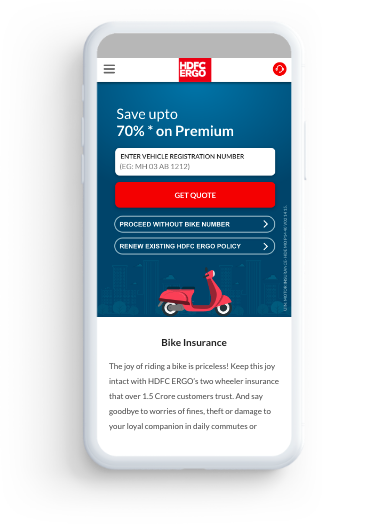


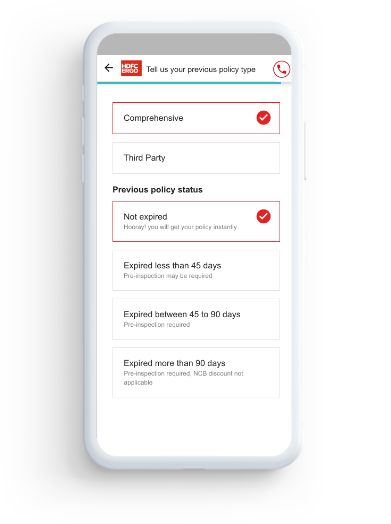










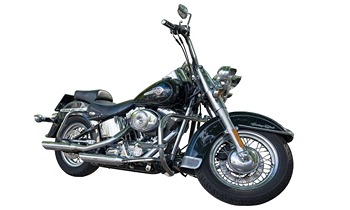
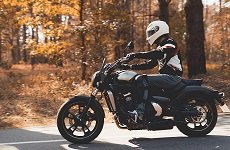
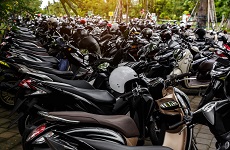


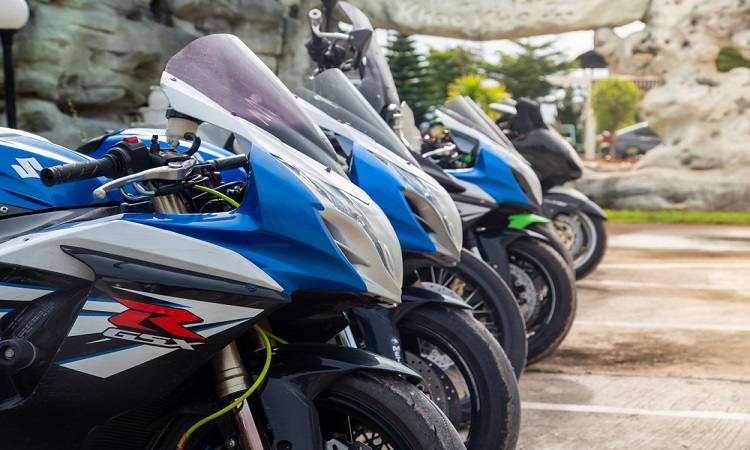
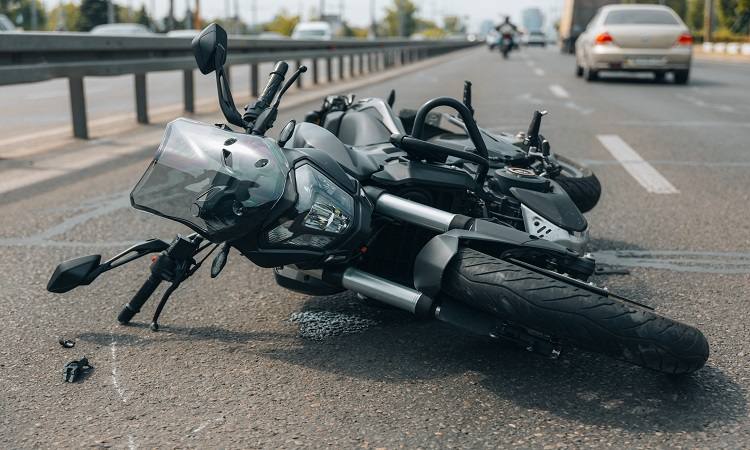
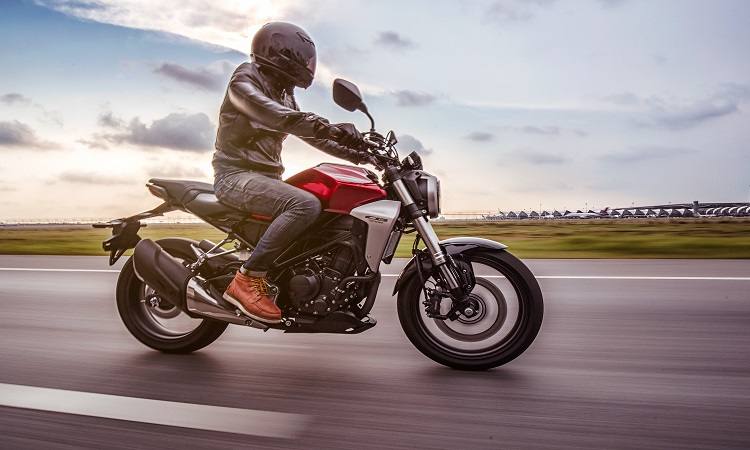

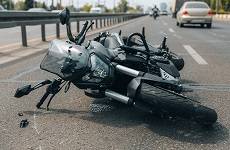






 Car Insurance
Car Insurance  Bike/Two Wheeler Insurance
Bike/Two Wheeler Insurance  Health Insurance
Health Insurance  Pet Insurance
Pet Insurance
 Travel Insurance
Travel Insurance  Home Insurance
Home Insurance  Cyber Insurance
Cyber Insurance  Third Party Vehicle Ins.
Third Party Vehicle Ins.  Tractor Insurance
Tractor Insurance  Goods Carrying Vehicle Ins.
Goods Carrying Vehicle Ins.  Passenger Carrying Vehicle Ins.
Passenger Carrying Vehicle Ins.  Compulsory Personal Accident Insurance
Compulsory Personal Accident Insurance  Travel Insurance
Travel Insurance  Rural
Rural  Critical illness Insurance
Critical illness Insurance 










